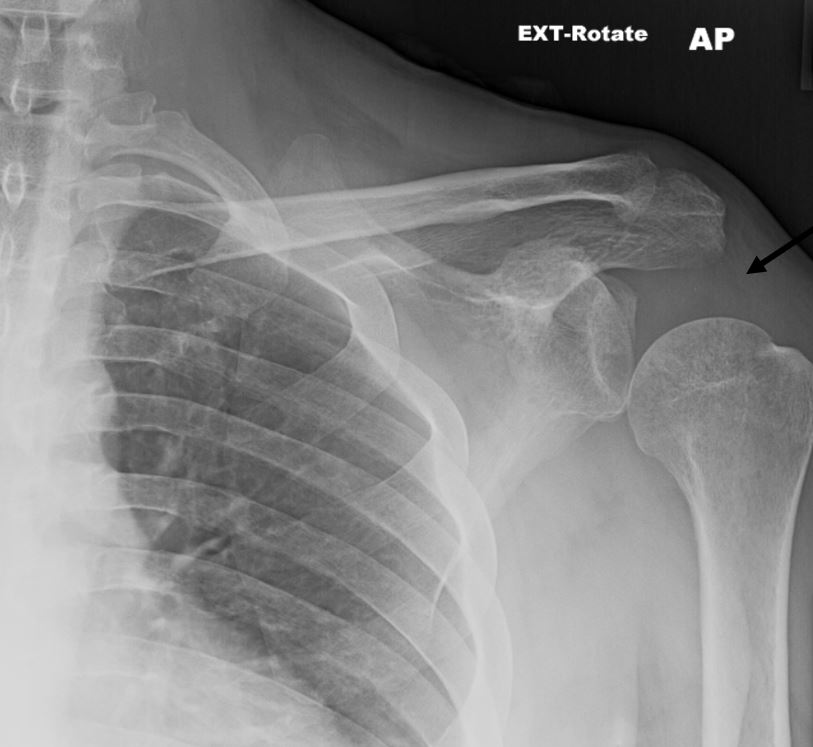Published on
Differential Diagnosis
- Bicipital tendonitis
- Clavicle fracture
- Inferior subluxation of the shoulder
Labrum tear

Diagnosis
This patient suffered an inferior subluxation of the shoulder—a partial dislocation of the glenohumeral joint or translation between the humeral head and the glenoid fossa while the humeral head is in contact with the glenoid fossa. This injury is uncommon compared with anterior and posterior dislocations. It usually is transient following trauma, but could be permanent. The subluxation is secondary to the muscle fatigue or neurogenic etiology with muscle weakness.
Learnings/What to Look for
- Subluxation typically develops over a few weeks following trauma and becomes apparent as pain and swelling in the region subsides and atrophy and weakness of the shoulder girdle muscles become clinically apparent
- Clinical findings include an inferiorly displaced humeral head, increased gap between the acromion process and humeral head and atrophy of the shoulder muscles
- Radiographic findings include inferior displacement of the humeral head from the glenoid fossa without a frank dislocation, increased distance between the acromion process under surface and the humeral head, muscle atrophy, and a fracture in shoulder girdle region
Pearls for Urgent Care Management and Considerations for Transfer
- Treatment is usually conservative, with immobilization (application of an elbow sling for 3 weeks) followed by physical therapy
- In patients with the humeral fracture, immobilization for 6 weeks is needed
- Recovery usually occurs over 3 to 8 weeks and takes longer in patients with neurological injury
Acknowledgment: Image and case provided by Experity Teleradiology (www.experityhealth.com/teleradiology).
A 35-Year-Old Man with Shoulder Pain Weeks After a Car Accident
1 2
